 | TODAY IN SCIENCE HISTORY
NEWSLETTER - 18 JANUARY |
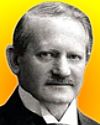 On 18 Jan 1861, Hans Goldschmidt was born, a German chemist who invented the use of Thermite for welding (patented 1895). Thus, he provided a solution at a time when engineers in charge of mining or milling plants located at remote points needed a quick, simple and effectual means of repairing castings or wrought work too heavy for the local forge. If a gear, a heavy shaft, or a connecting rod suddenly developed a flaw, when a duplicate is not on hand, then production would halt until a new part had been brought from a distance, but not if the engineer could use aluminothermics (as Goldschmidt named it). An account of Aluminothermics appeared in Mining Magazine (1904). On 18 Jan 1861, Hans Goldschmidt was born, a German chemist who invented the use of Thermite for welding (patented 1895). Thus, he provided a solution at a time when engineers in charge of mining or milling plants located at remote points needed a quick, simple and effectual means of repairing castings or wrought work too heavy for the local forge. If a gear, a heavy shaft, or a connecting rod suddenly developed a flaw, when a duplicate is not on hand, then production would halt until a new part had been brought from a distance, but not if the engineer could use aluminothermics (as Goldschmidt named it). An account of Aluminothermics appeared in Mining Magazine (1904). |
 On 18 Jan 1908, Jacob Bronowski was born, a Polish-American mathematician who is remembered as the writer and host of the BBC Television series, The Ascent of Man, which presented a humanistic view of science. Today's Science Store pick is: The Ascent of Man, by Jacob Bronowski. The high impact of this book (and of the TV series) is the passion Dr. Bronowski brings to the material, how it's clear he truly believed that it is necessary for everyone to understand how the development of society is the product of generations of people pursuing knowledge—science—and that this understanding is critical to the future of civilization:.the scientific imagination, standing always at the edge of the unknown and unsure, versus absolutism and dogma. It is available New from $28.68. Used from $0.01. (As of time of writing.). On 18 Jan 1908, Jacob Bronowski was born, a Polish-American mathematician who is remembered as the writer and host of the BBC Television series, The Ascent of Man, which presented a humanistic view of science. Today's Science Store pick is: The Ascent of Man, by Jacob Bronowski. The high impact of this book (and of the TV series) is the passion Dr. Bronowski brings to the material, how it's clear he truly believed that it is necessary for everyone to understand how the development of society is the product of generations of people pursuing knowledge—science—and that this understanding is critical to the future of civilization:.the scientific imagination, standing always at the edge of the unknown and unsure, versus absolutism and dogma. It is available New from $28.68. Used from $0.01. (As of time of writing.). | | For picks from earlier newsletters, see the Today in Science History Science Store home page. | |
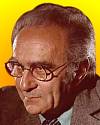 | I grew up to be indifferent to the distinction between literature and science, which in my teens were simply two languages for experience that I learned together. - Jacob Bronowski, Polish-British mathematician and science writer (born 18 Jan 1908).  |
| A thesis has to be presentable... but don't attach too much importance to it. If you do succeed in the sciences, you will do later on better things and then it will be of little moment. If you don't succeed in the sciences, it doesn't matter at all. - Paul Ehrenfest, Austrian physicist (born 18 Jan 1880).  |
| He who wishes to explain Generation must take for his theme the organic body and its constituent parts, and philosophize about them; he must show how these parts originated, and how they came to be in that relation in which they stand to each other. But he who learns to know a thing not only from its phenomena, but also its reasons and causes; and who, therefore, not by the phenomena merely, but by these also, is compelled to say: “The thing must be so, and it cannot be otherwise; it is necessarily of such a character; it must have such qualities; it is impossible for it to possess others”�understands the thing not only historically but truly philosophically, and he has a philosophic knowledge of it. Our own Theory of Generation is to be such a philosphic comprehension of an organic body, a very different one from one merely historical. (1764) - Caspar Friedrich Wolff, German physiologist (born 18 Jan 1734).  |
| Before you look at today's web page, see if you can answer some of these questions about the events that happened on this day. Some of the names are very familiar. Others will likely stump you. Tickle your curiosity with these questions, then check your answers on today's web page. |
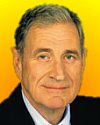 | A physicist and engineer, born 18 Jan 1933, invented a Noise Reduction System known by his name. He is famous for innovations for improving recording sound quality used on high-quality cassettes in car stereos and digital surround sound in movie theaters. As a high school student he went to work part time for Ampex Corporation. While still in college, he joined the small team of Ampex engineers dedicated to inventing the world's first practical video tape recorder.
 Can you name this scientist? |
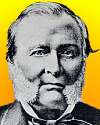 | Joseph Farwell Glidden, born 18 Jan 1813, was an Illinois farmer when he developed the design of a product that would transform the West. It opened the plains to large-scale farming, bringing the era of the cowboy and the round-up to an end.
 What was this product? |
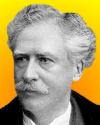 | Herman Snellen (1834-1908) was a Dutch ophthalmologist whose Snellen Chart imprinted with lines of black letters is used for testing visual acuity. This chart soon gained acceptance in all civilized countries.
 What is the Snellen fraction? |
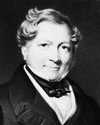 | John Heathcote (1783-1861) as a boy was employed making stockings and thus became familiar with the manufacturing machines. By 1809, he had developed and patented his own machine, capable of intricate, complicated motions and delicate operations which could make a certain product hundreds of times faster than it could be manufactured by hand.
 What product was made on Heathcote's machines? |
| On 18 Jan of a certain year, the first live giant panda outside China was brought, by clothing designer Ruth Harkness, to the U.S. from China. Named Su-Lin, the male bear cub arrived in San Francisco, California.
 In which decade did this panda first come to the U.S.? |
 | On 18 Jan 1911, the first landing of an aircraft on a ship took place as pilot. Lt. Eugene B. Ely brought his 50-hp Curtiss pusher biplane in for a safe landing on a 119-ft wooden platform attached the deck of the U.S.S. Pennsylvania in San Francisco Harbor. The ingenious arrangement he devised to arrest his plane upon landing evolved into standard equipment on aircraft carriers.
 What equipment did Eugen Ely devise to arrest his plane when landing on a ship? |
When you have your answers ready to all the questions above, you'll find all the information to check them, and more, on the January 18 web page of Today in Science History. Or, try this link first for just the brief answers.
Fast answers for the previous newsletter for January 17: bifocal eyeglasses • Pluto • dogs • decade including the year 1949 • San Francisco, California, U.S.A.. |
 If you enjoy this newsletter, the website, or wish to offer encouragement or ideas, please send feedback by using your mail reader Reply button. If you enjoy this newsletter, the website, or wish to offer encouragement or ideas, please send feedback by using your mail reader Reply button.
Your click on a StumbleUpon, Google+ or Facebook social button on the site webpages is also a welcome sign of appreciation. Thank you for using them. |
To find citations for quotations go to the corresponding webpage by clicking on the “quotes” balloon icon. Sources for the thumbnails appear on today's webpage with the corresponding item.
� This newsletter is copyright 2014 by todayinsci.com. Please respect the Webmaster's wishes and do not put copies online of the Newsletter � or any Today in Science History webpage. (If you already have done so, please remove them. Thank you.) Offline use in education is encouraged such as a printout on a bulletin board, or projected for classroom viewing. Online, descriptive links to our pages are welcomed, as these will provide a reader with the most recent revisions, additions and/or corrections of a webpage. For any other copyright questions, please contact the Webmaster by using your mail reader Reply button. |
--
If you do not want to receive any more newsletters,
Unsubscribe To update your preferences and to unsubscribe visit
this link 


 On 18 Jan 1861, Hans Goldschmidt was born, a German chemist who invented the use of Thermite for welding (patented 1895). Thus, he provided a solution at a time when engineers in charge of mining or milling plants located at remote points needed a quick, simple and effectual means of repairing castings or wrought work too heavy for the local forge. If a gear, a heavy shaft, or a connecting rod suddenly developed a flaw, when a duplicate is not on hand, then production would halt until a new part had been brought from a distance, but not if the engineer could use aluminothermics (as Goldschmidt named it). An account of Aluminothermics appeared in Mining Magazine (1904).
On 18 Jan 1861, Hans Goldschmidt was born, a German chemist who invented the use of Thermite for welding (patented 1895). Thus, he provided a solution at a time when engineers in charge of mining or milling plants located at remote points needed a quick, simple and effectual means of repairing castings or wrought work too heavy for the local forge. If a gear, a heavy shaft, or a connecting rod suddenly developed a flaw, when a duplicate is not on hand, then production would halt until a new part had been brought from a distance, but not if the engineer could use aluminothermics (as Goldschmidt named it). An account of Aluminothermics appeared in Mining Magazine (1904). 

 Can you name this scientist?
Can you name this scientist? 
 What was this product?
What was this product? 
 What is the Snellen fraction?
What is the Snellen fraction? 
 What product was made on Heathcote's machines?
What product was made on Heathcote's machines?  In which decade did this panda first come to the U.S.?
In which decade did this panda first come to the U.S.? 
 What equipment did Eugen Ely devise to arrest his plane when landing on a ship?
What equipment did Eugen Ely devise to arrest his plane when landing on a ship?  If you enjoy this newsletter, the website, or wish to offer encouragement or ideas, please send feedback by using your mail reader Reply button.
If you enjoy this newsletter, the website, or wish to offer encouragement or ideas, please send feedback by using your mail reader Reply button. 

Δεν υπάρχουν σχόλια:
Δημοσίευση σχολίου